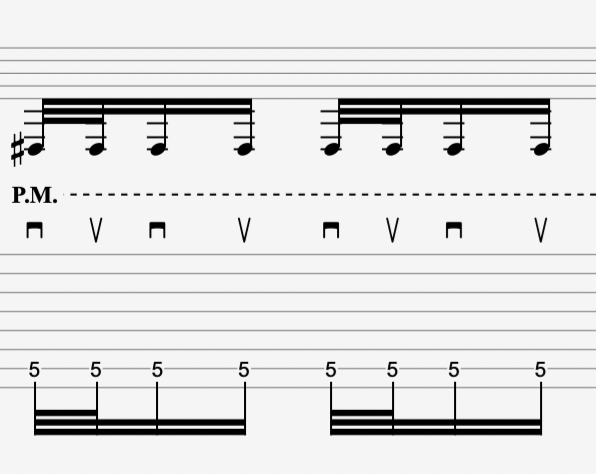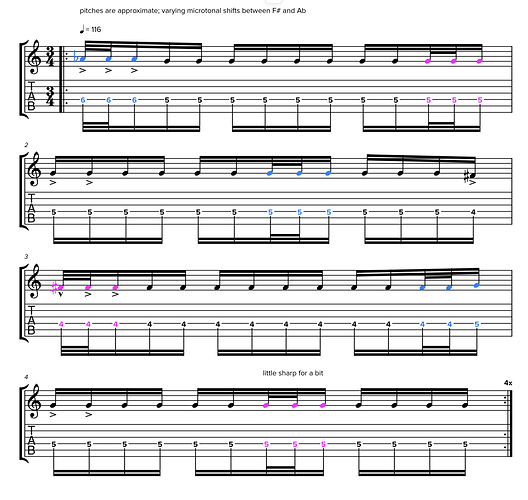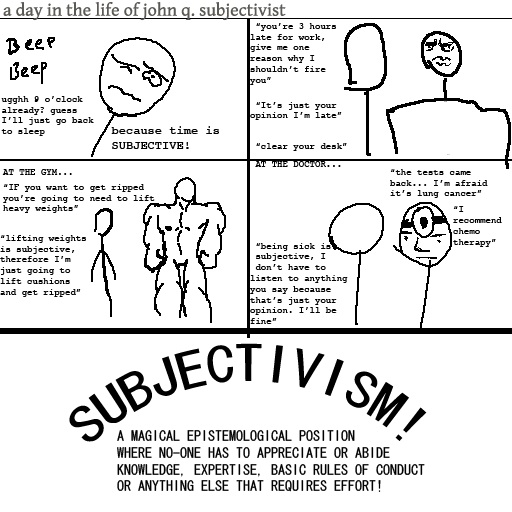To be clear, I don’t even disagree that A is best; I actually have no real belief/position at this point. I just threw up three picking approaches that came to mind. My gripe was with the ‘wrong/right’ distinction without support.
Listen to people who know better than you. It saves you time
Saves time for what? I specified that I was procrastinating. Saving time seems antithetical to the real goal here. Ok but seriously, to be more clear:
(1) I’m interested in the discussion of mechanics and the pros/cons of different approaches, as well as just generally understanding variables at play. I’m not actually that interested or invested in playing the thing. Like, that’s cool, but not that useful for anything in my own playing/career/life. So this post was just “hey this thing is neat, any thoughts about it?” and that’s pretty much it.
(2) Even if I agreed with your basic principle here - ‘listen to people who know better than me’ - I have to, for myself, make the determination of who fits in to that category. No offense intended, you’re a complete and total stranger (or maybe we have interacted somewhere else on the internet? apologies if we have) so the quote doesn’t really apply here.
just understand I don’t have the inclination to do huge back-and-forths on this forum. It’s exhausting when the answer is blindingly obvious (which is the case here). It would be like a mathematician trying to argue on a forum with people who think 1 + 1 = 5, typing it out in painstaking detail, and either no one responds, or, even worse, they start arguing with you.
If there’s a point that you don’t feel like taking the time to get into, that’s fine, but you gotta understand that it’d be foolish of anybody to just take your word for it or agree that it’s ‘obvious’ just because it seems obvious to you. I mean, if there’s some satisfaction you get from hopping into a chat and going “I’m RIGHT!” then bouncing, then by all means, get your kicks, but you know, there are like, people here who come with the explicit purposes of discussing/learning/hashing out their ideas, etc., so I think it’d be expected that someone would ask “well, wait, why?” Without support or evidence or reasoning, I basically interpret your post as “my vote is A, that seems easiest to me” and that’s it.
You presented 3 options for a rhythmic pattern. We have now have 5-ish in this thread. Pepe’s and Bakerman transcriber guy added to the list. Both are unstable at high speeds.
If you want a fully detailed explanation of why Option A is the most objectively stable pattern here I can PM it to you
I mean, I’m interested enough to the level that I casually started this thread on my lunch break because I thought the figure was interesting. If you have reasons for preferring one picking approach vs another I’m absolutely interested! I’m certainly not dogmatic about the best way to pick some 6 second figure from a movie soundtrack.
As of now from my point of view you’ve just taken this super firm position, I poked a little fun at you for having the firm non-subjective position but not supporting it with anything substantial (again, really mostly me procrastinating work I’m putting off, and not anything personal…I just get a little goofy staring at my computer all day every day.) Now we’ve sort of gotten into some “discussion about discussing” which honestly I find more interesting than the actual picking issue. I really wish you no further aggravation here, so if you want to chat picking approaches either here or PM and that’s a valuable enriching thing for you, please do, but if it’s a negative experience, my casual interest in picking approaches for this figure definitely aren’t worth ruining someone’s morning. I very much meant for this to be like a “hey, this is kinda neat, whatdya think?” type of thread and not a heated debate over the fate of the picking universe or anything like that.
The tl;dr version is that all 4 other solutions involve extraneous motions in the picking patterns that, when added up, result in the creation of undesirable rhythms and tension. These movements result in sound quality degradation and an instantaneous speed cap.
Right, but obvously we’re looking for a method that, relative to the other options, produces less tension, has fewer obstacles towards producing the correct rhythm, and has a higher speed cap. So, and again I apologize if this is aggravating, but this to me is akin to saying “it’s best because it’s best.”
Friend 1 is a world-class metal guitarist formerly signed to a major label and he appeared on “Best Metal Guitarist” lists with John Petrucci, Tosin Abasi, etc. Toured with Jason Richardson, Periphery, guys in Born of Osiris, etc. He said “Option A no question”
Friend 2 is a guy who shared the stage with Paul Gilbert, Steve Vai, etc. “I would do Option A but C can be useful for tone if you accept it is inefficient”
Cool! That’s interesting. It doesn’t negate any of the above, but I will take it as a couple more votes for option A.
Listen to people who know better than you
Another obnoxious point of clarity from me: the most eye opening thing about CTC for me has been seeing that often great players really do not know why what they are doing works, and might not even always be doing what they think they’re doing. For example, the clips with Jimmy Bruno where he was saying the it was the string pushing the pick slant around, while the slow mo clip clearly showed JB preparing some the slants before the string was hit. JB is a masterful technician among other things, but his assessment of what was going on in his own technique was incorrect. Hopefully where I’m going with this is obvious…












 then it’d be 77?
then it’d be 77?